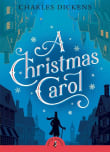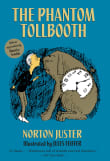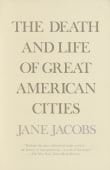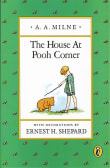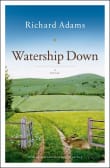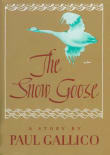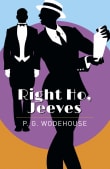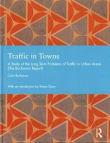The Wind in the Willows
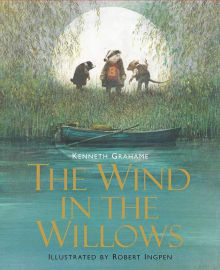
Book description
Spend a season on the river bank and take a walk on the wild side . . .
Spring is in the air and Mole has found a wonderful new world. There's boating with Ratty, a feast with Badger and high jinx on the open road with that reckless ruffian,…
Why read it?
10 authors picked The Wind in the Willows as one of their favorite books. Why do they recommend it?

Whenever I read this book’s opening lines, I sink under the author’s magic spell.
Forget Faulkner, forget Joyce, try Grahame’s poetic prose. When Grahame wrote this, the whole idea of writing books for kids was still fresh, and the idea of anthropomorphic animals was novel, too. The book is so good it still seems like something new under the sun.
If you don’t have a child available, pretend that a wise, kind adult is reading the book to you.
From Eric's list on children's books that you will want to read to your kids every night.

This book is considered by many to be a classic and with good reason.
The vivid characterization, scene-setting, and simple wisdom of this book make it memorable and enjoyable as far more than a mere children’s bedtime story. The way Grahame chooses his words to describe a scene simply fits so well. You’re able to immerse yourself so completely in this world that is at once familiar yet just a tad unusual.
That semi-historical setting with a casual element of the fantastical is why I love this book so much. Along with its anthropomorphic protagonists, of course.

This may be a children’s book, but reading it as an adult I found it poetic, funny, and deeply moving.
The characters keep switching from being real animals to Victorian bachelors with comfortable residences, and there are constant hilarious touches, like Toad combing his hair (!) before an outing. Things have changed since 1908, when it was first published, and the portrayal of nature now seems terribly poignant – the seasons succeed each other peacefully, the river flows in all its beauty: nature, it seems, will stay the same forever. How I envied Grahame and his world!
If you love The Wind in the Willows...

Toad is an eternal archetype with enduring relevance, fascinating my children as much as he did me in his pursuit of thrilling egoistical self-satisfaction.
His peers, Mole, The Rat, and Badger, are there to show the value of friendship, and the near-mystical riverbank and wooded setting is a beautiful one, but the book is Toad’s show, as he drowns out every voice other than his, to very entertaining effect.

Mole, Rat, Toad, and Badger are some of my favorite people in books. They are resourceful and they are kind. And though they sometimes make mistakes, of course, they always try to be good to their friends.
You might learn something from their adventures, but it’s not a requirement. Early in Chapter 1, Rat (who is actually a water vole) offers these words to live by: “Believe me, my young friend, there is nothing—absolute nothing—half so much worth doing as simply messing about in boats.”
From Peter's list on animals that talk.

Is there any more likeable villain than Mr. Toad?
The great aristocratic amphibian has a deep boyish charm, and his love of motoring in later TV and film adaptations, is often portrayed as essentially harmless. Yet in fact, when it was written, it was not meant to be all that sympathetic.
In my own book, I explain how Mr. Toad represented the rich reckless car owners of the early Victorian period, stealing the road from decent people like Mole, Ratty, and Badger and getting everyone into trouble with a pointless demand for excitement.
In the end, Toad repents. I wish…
From Daniel's list on urbanists who hate cars.
If you love Kenneth Grahame...

The Wind in the Willows is the most preposterously convincing book ever written about animals who can talk and wear waistcoats and operate boats while still maintaining their essential animal natures. It is also a heady mixture of high adventure and serious mysticism. The Christmas chapter, “Dulce Domum,” can stand alone from the rest of the book, and it’s a must-read every December. Mole and Rat want to spend a jolly Christmas at Mole’s old place—but they have to find it first in all the snow. If you’re like me, this will make you appreciate home, however humble.
From Tim's list on Christmas stories to read at a fireside.

The winning combination of idyllic countryside and the innocent friendship of the decent animals at the centre of this heart-warming tale lure you easily away from the worries and concerns of the modern world and transport you to this fabled rural landscape. For added enjoyment there are also the comic antics of 'the famous' Toad of Toad Hall. It's a refreshing gin and tonic in book form.
From David's list on raising the spirits.

Old fashioned these days perhaps, echoing a very English landscape too, like me sometimes, Wind in The Willows is still an unmissable gem. The tale of the friendship between ratty, mole, and badger, and of course the irrepressible Mr. Toad, shines with a beautiful innocence, but also the pure lyricism of the writing. So producing one of my favorite chapters in all literature – "Piper At The Gates of Dawn." That addresses a particular spiritual element too, when the little animals have a vision of the great God Pan, too powerful for them to remember safely. Which underlines why animals…
From David's list on fantasy about animals, nature and the environment.
If you love The Wind in the Willows...

Please here me when I say you haven’t read The Wind in the Willows until you’ve read the version illustrated by Inga Moore. Her depictions of animals are charming, witty, and imagined with great skill. In this beloved tale, a humble mole – eager for adventure - sets out across the English countryside. With newfound friends, the plucky River Rat, wise Badger, and the spirited Toad, Moley discovers beauty he had never seen, danger he could not imagine, and most of all, a profound understanding. Like our own animal companions, our dear Mole reminds us that the simple things –…
From Lisa's list on celebrating what animals can teach us.
Want books like The Wind in the Willows?
Our community of 12,000+ authors has personally recommended 100 books like The Wind in the Willows.





